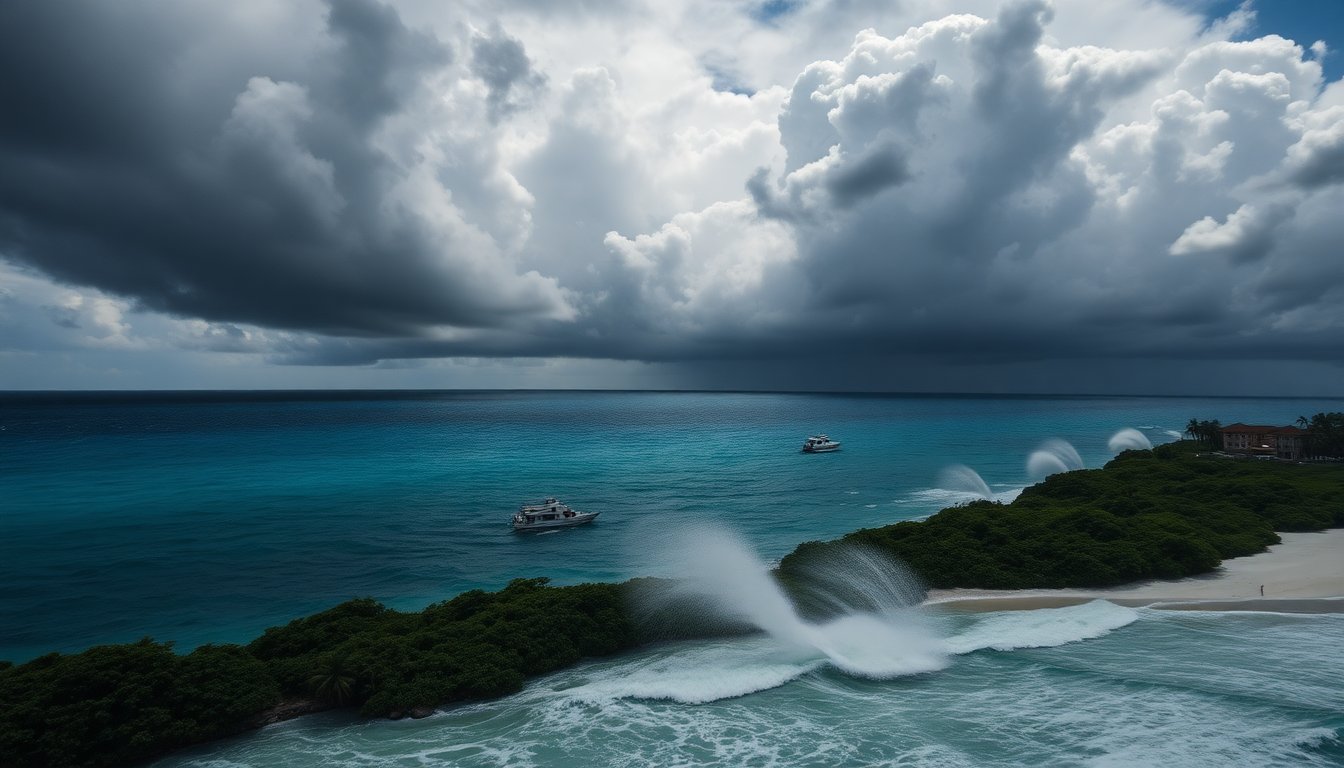Table of Contents
As the Caribbean braces for Hurricane Melissa, the storm has intensified into a formidable Category 3 hurricane, raising significant concerns among meteorologists and local authorities. With maximum sustained winds reaching 185 km/h, Melissa is forecasted to bring heavy rainfall and catastrophic flooding to Jamaica and parts of southern Haiti, prompting emergency measures across the region.
Originating in the Atlantic, Hurricane Melissa has rapidly gained strength, and its slow movement indicates that affected areas will endure prolonged adverse conditions. The U.S. National Hurricane Center has cautioned that this storm could intensify further as it approaches landfall.
Current impact and warnings
As of Saturday night, Hurricane Melissa was located approximately 200 kilometers southeast of Kingston, Jamaica, and about 455 kilometers southwest of Port-au-Prince, Haiti. The storm’s slow progress, moving west at just 6 km/h, means that regions in its path could experience extensive damage over several days.
Rising flood risks
Forecasts suggest that Jamaica could receive up to 1,000 millimeters of rainfall by midweek, leading to potentially devastating flooding. Jamaican Prime Minister Andrew Holness has urged residents to take the storm seriously and activated over 650 shelters across the island, ensuring that food supplies are ready for distribution in emergencies.
In addition to Jamaica, the storm poses serious threats to southern Haiti and the Dominican Republic, where local authorities predict that up to 700 millimeters of rain could result in life-threatening conditions, including flooding and landslides. Reports indicate that three fatalities have already been confirmed in Haiti, along with additional injuries due to a wall collapse.
Emergency preparations in affected regions
In light of the impending storm, both Jamaica and Haiti have made substantial preparations to mitigate the impact of Hurricane Melissa. In Jamaica, all airports will close within 24 hours of the hurricane warning. Local authorities have ensured that shelters are stocked with essential supplies, and officials are poised for rapid distribution of food packages to those in need.
Community responses and challenges
Despite the warnings, many residents are reluctant to evacuate their homes, reflecting a common challenge during severe weather events. In Haiti, Ronald Delice, a director of civil protection, highlighted the distress among locals as they confront rising river levels and flooding in various regions, particularly in Sainte-Suzanne, where a bridge has been compromised due to overflow.
The Dominican Republic is also facing significant challenges, as nearly 200 homes have been damaged and water supply systems disrupted, affecting more than half a million residents. The storm’s aftermath has led to downed trees, malfunctioning traffic lights, and minor landslides that have isolated several communities.
Future predictions and concerns
Looking ahead, Hurricane Melissa is expected to continue its trajectory toward Cuba, where up to 30 centimeters of rain may fall in the coming days. As the storm progresses, meteorologists express concerns that it may escalate further, potentially reaching Category 5 status. The Bahamas has also been warned to prepare for possible effects, which could extend tropical storm conditions to several islands.
While current forecasts suggest that the storm will likely be steered away from the United States, residents in Florida and nearby areas are advised to remain vigilant. The National Oceanic and Atmospheric Administration has indicated the possibility of rip currents and hazardous sea conditions, emphasizing that even if the storm does not make landfall, its effects could still be significant.
Originating in the Atlantic, Hurricane Melissa has rapidly gained strength, and its slow movement indicates that affected areas will endure prolonged adverse conditions. The U.S. National Hurricane Center has cautioned that this storm could intensify further as it approaches landfall.0





